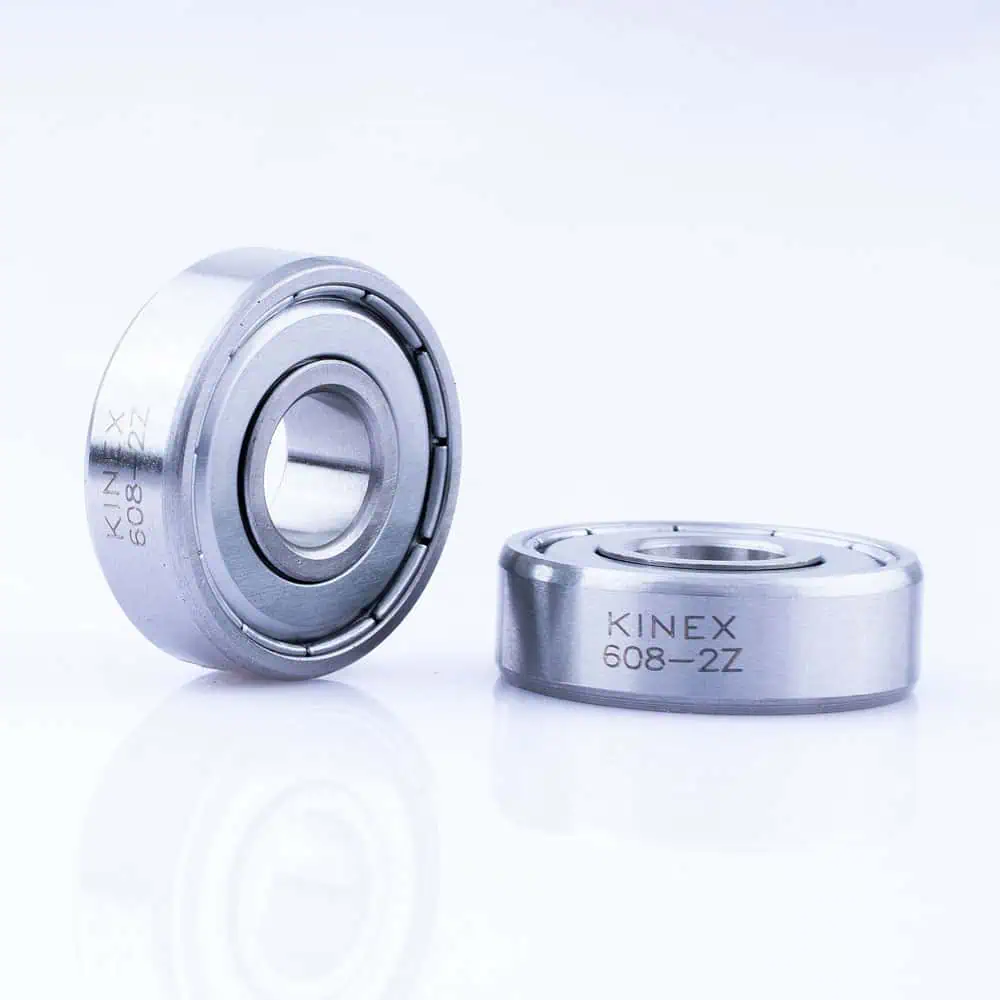Miniature bearings play a crucial role in today’s advanced engineering, where space is minimized but precision cannot be compromised. From medical equipment to robotics and aerospace, these compact components deliver reliable performance under demanding conditions. At KINEX BEARINGS, we design miniature bearings that combine high accuracy with durability for specialized applications.
What Are Miniature Bearings?
Miniature bearings are rolling elements with bore sizes typically below 10 mm. Despite their small size, they are engineered to handle high rotational speeds and required load capacity. Materials may include special requirements for stainless steel, hybrid ceramics, advanced lubricants, and extended service life for specific applications.
Key Characteristics of Miniature Bearings
- Ultra-compact design for restricted spaces
- High precision for critical applications
- Low acoustic noise and vibrations
- Available in stainless steel and ceramic variants
Applications of Miniature Bearings
Miniature bearings are widely used in industries where compactness and accuracy are essential.
Medical Equipment
Devices such as dental handpieces, surgical tools, and diagnostic machines rely on miniature bearings for smooth, silent, and hygienic operation.
Robotics and Automation
Miniature bearings support lightweight robotic joints, sensors, and actuators, enabling high precision in automated systems.
Aerospace and Instrumentation
Navigation instruments, gyroscopes, and aerospace sensors use miniature bearings for stability under extreme conditions.
Advantages of Miniature Bearings
Compared to standard bearings, miniature bearings provide:
- Precision at high rotational speeds
- Space-saving design for compact machinery
- Long service life with proper lubrication
- And many more
Performance in Extreme Conditions
Miniature bearings can operate in high-speed, high-temperature, or vacuum environments, depending on material selection.
Material Options
Stainless steel versions offer corrosion resistance, while hybrid ceramic types excel at high speeds and electrical insulation.
How to Select the Right Miniature Bearing
Choosing the correct miniature bearing depends on bore size, load capacity, operating speed, and environmental conditions. Consulting with a trusted manufacturer or technician ensures the best fit for your application.
Key Takeaways
Miniature bearings represent the ideal solution for industries where precision, reliability, and compact design are critical. With propper expertise, your systems gain efficiency and long-lasting performance. Contact KINEX BEARINGS to find the perfect solution for your needs.
FAQ: Miniature Bearings
What are miniature bearings used for?
Miniature bearings are used in robotics, medical devices, aerospace instruments, and other compact, high-precision machinery.
How small are miniature bearings?
They typically have bore diameters below 10 mm, with some models as small as 1 mm.
What materials are miniature bearings made of?
Common materials include stainless steel for corrosion resistance and hybrid ceramics for high-speed performance.
Can miniature bearings handle high speeds?
Yes. With proper lubrication, miniature bearings can reach extremely high rotational speeds while maintaining precision.
How do I select the right miniature bearing?
Consider size, load capacity, speed, and environment. Manufacturer guidance ensures the correct specification for your application.
